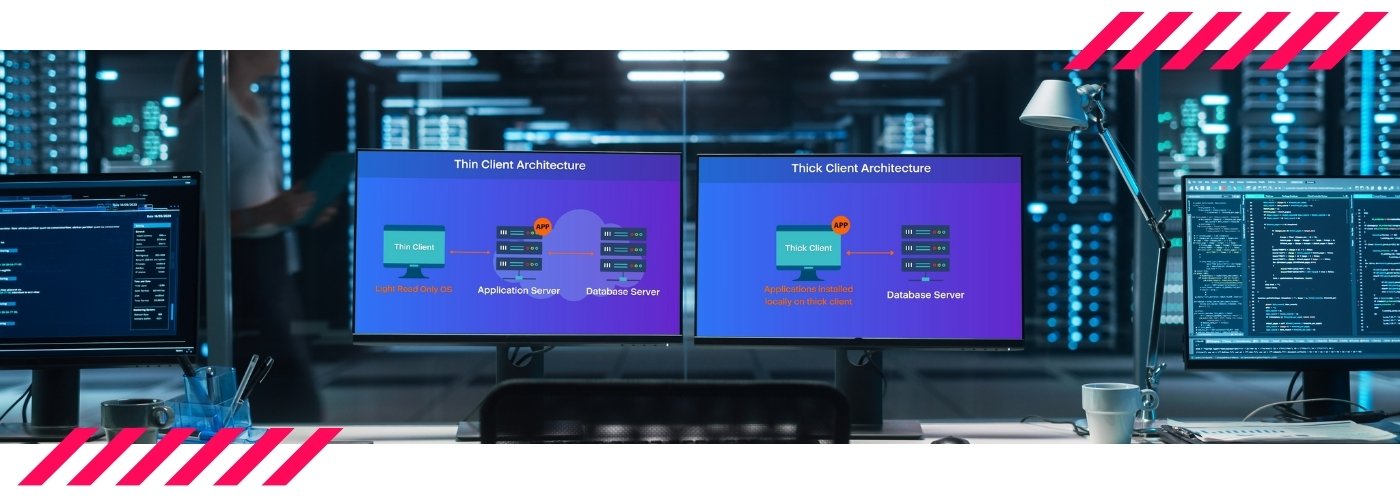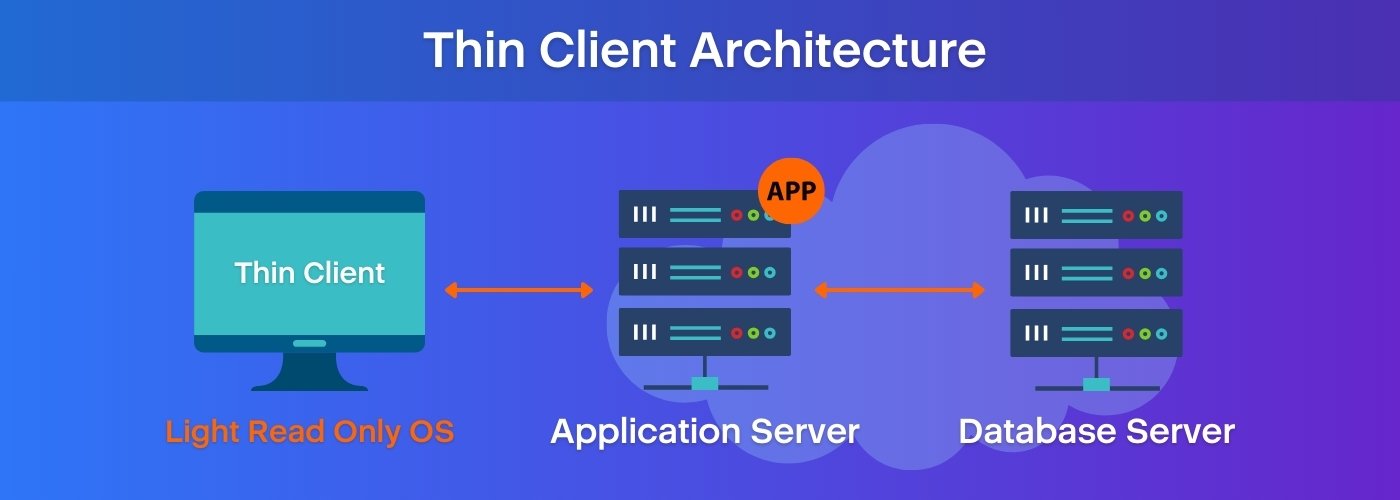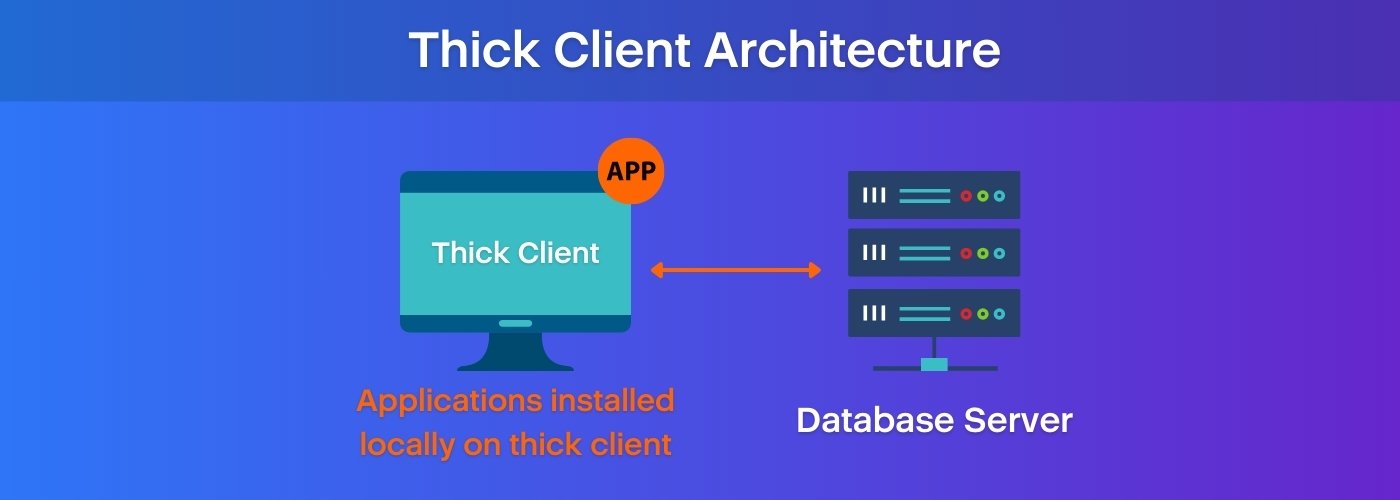In the world of information technology, two terms that often surface in discussions about system reliability and continuity are “Fault Tolerant” and “High Availability.”
While they may sound similar, these concepts represent distinct approaches to ensuring that computer systems remain operational, even in the face of adversity.
In this post, we’ll delve into the key differences between Fault Tolerant and High Availability systems.
Thin Client vs Thick Client

Before we dive into the specifics of Fault Tolerant and High Availability systems, it’s essential to understand the foundational difference between thin client and thick client architectures. These terms are often used interchangeably with the respective concepts, so let’s clarify them first.
Thin Client Architecture

Thin client architecture, also known as client-server architecture, is a system design where most of the processing occurs on a centralized server, while the client devices (end-user devices) are lightweight and primarily responsible for displaying the user interface and handling user input. This architecture minimizes the computational load on the client devices, making them “thin” in terms of processing power and software requirements.
One of the key advantages of thin client architecture is its simplicity. Since the heavy lifting happens on the server, maintaining and updating applications and data is more straightforward. This approach can also lead to cost savings, as client devices can be less expensive and easier to replace or upgrade.
Thick Client Architecture

Conversely, thick client architecture, often referred to as fat client or standalone architecture, places more processing power and responsibility on the client devices themselves. In this scenario, client devices have substantial computing resources and often store a significant portion of the application code and data locally.
Thick clients are capable of executing tasks independently, even when disconnected from the network or server. This autonomy can be beneficial in scenarios where network connectivity is unreliable or needs to be intermittent.
Now that we have a clear understanding of thin client vs. thick client architectures, let’s explore how these architectural choices intersect with Fault Tolerant and High Availability systems.
Are Thin Clients Still Used?
Before delving into the specifics of Fault Tolerant and High Availability systems, you might wonder if thin clients are still relevant in today’s technology landscape. The answer is a resounding yes.
Thin client architectures continue to be widely used in various scenarios, including:
Virtual Desktop Infrastructure (VDI): Thin clients are popular in VDI environments, where virtual desktops are hosted on central servers and accessed by thin clients. This approach streamlines desktop management and enhances security.
Resource Optimization: Thin clients are ideal for situations where you want to maximize resource utilization on central servers, allowing for efficient scaling and load balancing.
Cost-Effective Solutions: Thin clients are often more cost-effective, especially in large deployments, as they require less powerful hardware and reduced maintenance.
Now, let’s explore the differences between Fault Tolerant and High Availability systems within the context of thin and thick client architectures.
Fault Tolerant Systems:
Fault Tolerant systems are designed to continue functioning even when hardware or software failures occur. In the context of thin client architecture, this means that if a server in a client-server setup fails, the system should seamlessly switch to a backup server without any noticeable interruption for the end-users. Fault tolerance is about redundancy and instant failover mechanisms.
In a thick client architecture, fault tolerance often involves the ability of the client device to gracefully handle errors or failures. For example, if a local storage drive fails on a thick client, the system may have mechanisms in place to recover data or switch to an alternative storage device.
High Availability Systems:
High Availability systems focus on minimizing downtime and ensuring continuous service availability. In thin client architecture, high availability may involve clustering multiple servers to distribute the load and provide redundancy. If one server fails, another can immediately take over, maintaining uninterrupted service for the thin clients.
In a thick client architecture, high availability might entail having backup servers or services available in case of failure. For instance, if a thick client application relies on a central database, there may be multiple redundant databases to ensure data is always accessible.
In summary, while thin client and thick client architectures form the foundation of IT systems, Fault Tolerant and High Availability systems address the resiliency and reliability aspects. Fault Tolerant systems prioritize fault recovery and seamless failover, while High Availability systems focus on minimizing downtime and ensuring continuous service availability. Understanding these differences is crucial for designing robust and reliable IT infrastructure tailored to specific needs and constraints.


More to Read
What Are Managed Cloud Services? (And Why Some Businesses Choose Self-Managed Cloud Instead)
Cloud computing has revolutionized how businesses deploy, manage, and scale their digital infrastructure.
Apr
How to Choose the Right Cloud Storage Solution: A Comparison of Features, Costs, and Security
The sheer volume of data businesses handle today is enormous. Globally, approximately 402.74 million
Apr
Sharktech Announces New Web Hosting and Cloud Industry Alliance
Sharktech and 22 Other Companies Launch Secure Hosting Alliance to Build Trusted Web Hosting Industry
Feb
Think the Cheapest Dedicated Server is A Good Idea? What You Need to Know
Should you hunt for the cheapest dedicated server? Finding the most affordable option
Oct
Discover How These 8 Cloud Monitoring Tools Can Help You Drive Better Business Performance
When it comes to managing your cloud environment, cloud monitoring tools are essential
Oct
Pick the Best Cloud Management Platform with These 5 Pro Tips
Managing cloud infrastructure can become overwhelming, especially as businesses scale and adopt more
Oct